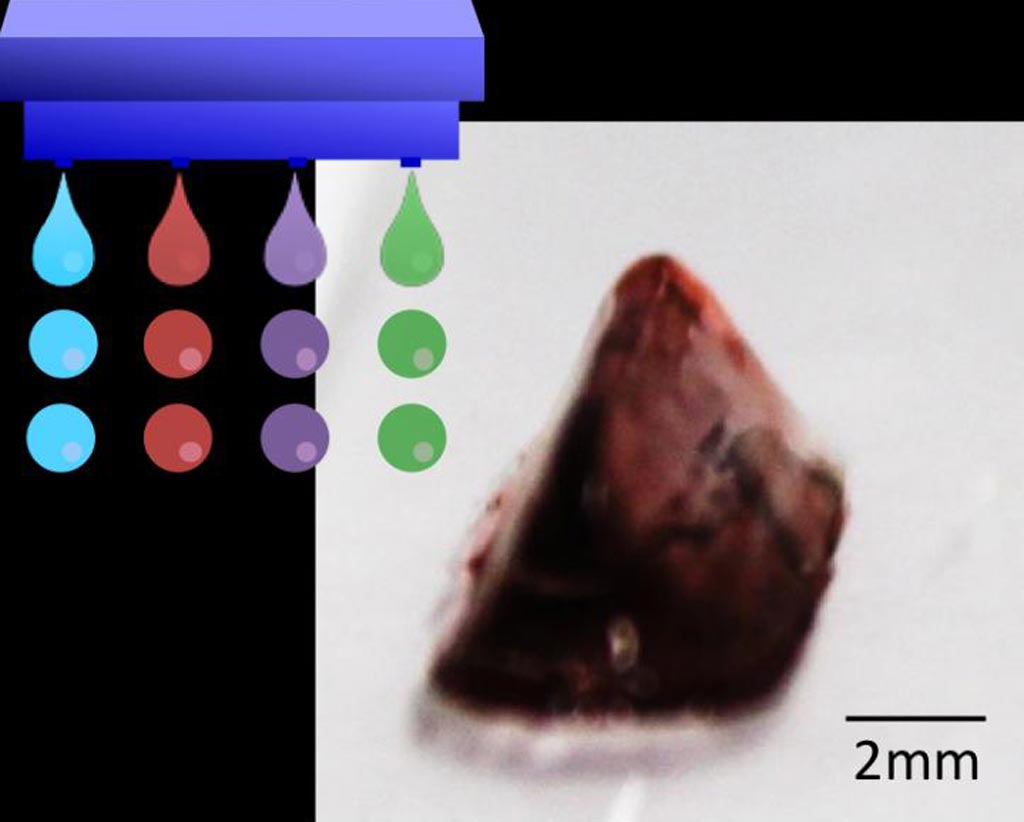Cross-linked Hydrogels Developed for 3D Printing
By LabMedica International staff writers
Posted on 08 Jan 2018
A team of Japanese biomedical engineers has developed a novel, enzyme-based three-dimensional printing method that enables in vitro growth of complex cellular structures.Posted on 08 Jan 2018
Investigators at Osaka University (Japan) reported in the December 11, 2017, online edition of the journal Macromolecular Rapid Communications that they had developed a cytocompatible inkjet bio-printing approach that enabled the use of a variety of bio-inks to produce hydrogels with a wide range of characteristics.

Image: A three-dimensional hydrogel construct fabricated through drop-on-drop multi-material bio-printing (Photo courtesy of Osaka University).
Stabilization of bio-inks was obtained by using the enzyme horseradish peroxidase (HRP) to catalyze cross-linking within the hydrogel while consuming cytotoxic hydrogen peroxide (H2O2) in the process.
Three-dimensional cell-laden hydrogels were fabricated by the sequential dropping of a polymer-containing bio-ink that had been cross-linked through the enzymatic reaction and H2O2 onto droplets of another bio-ink that contained the polymer, HRP, and cells. The HRP in the second drop neutralized the H2O2 carried over in the first drop. This approach promoted adhesion of the biological ink droplets and allowed printing of complex biological structures. The approximately 95% viability of mouse fibroblasts enclosed in a bio-ink hydrogel consisting of gelatin and hyaluronic acid derivatives and subsequent elongation of the cells demonstrated the suitability of this three-dimensional printing approach.
"Advances in induced pluripotent stem cell technologies have made it possible for us to induce stem cells to differentiate in many different ways," said senior author Dr. Makoto Nakamura, professor of biochemical engineering at Osaka University. "Now we need new scaffolds so we can print and support these cells to move closer to achieving full three-dimensional printing of functional tissues. Our new approach is highly versatile and should help all groups working to this goal."
Related Links:
Osaka University













